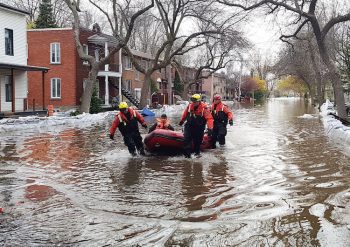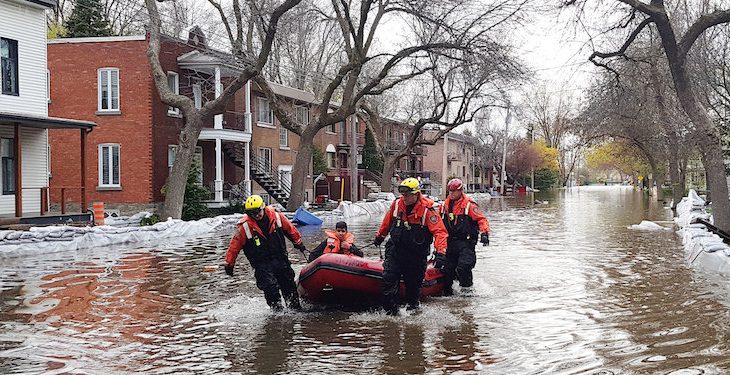Maria Giammarco, Communication, Education, and Outreach Editor
The New York Times – “Ignore Climate Change At Your Peril”
CTV News – “Canada warming twice as fast as rest of the world: scientific report”
iPolitics – “Morning Brief: The future looks grim”
Aside from the obvious climate theme, what do these headlines have in common? Well, they’re attention grabbing, informative, speak to important truths, and might even get you reading.
So…what’s the problem? Of course, the harsh predictions about the future cannot be understated, and the facts behind climate issues and policies are critical. But according to research on the science of climate communications, these headlines perpetuate “doomsday” narratives: they contain alarmist language and focus on the inevitable catastrophe of climate change, potentially turning readers off in the process.
These doomsday narratives build what researchers like Per Espen Stoknes refer to as “psychological barriers to action.” Why? The language of doomsday narratives evokes feelings of guilt, shame, despair, and apathy. Not exactly motivational, eh?

2017 Quebec flooding, Montreal; Photo by Coastal Elite via Flickr, CC BY-SA 2.0
It’s difficult enough for people to understand climate change and what needs to be done about it, never mind actually doing something about it. Changing our behaviours can feel daunting and difficult – becoming “sustainable” may seem like an all-or-nothing choice, requiring a complete overhaul of our lives. I’m sure many of us support the need to save starving polar bears or rebuild the Great Barrier Reef, but where do we begin? The task of saving our world from climate change can feel insurmountable and many challenges are difficult to connect to our day-to-day lives.
Combine this sense of being overwhelmed with the impact of doomsday language and you have the recipe for inaction. But all hope is not lost. The way we communicate can play an important role in motivating action. How? Well, let’s start with a couple things to avoid.
Don’t focus on political language or identity politics.
Perceptions of the risks of human-induced climate change are strongly linked to political identity – so much so that measures of scientific knowledge and reasoning can be completely unrelated to these perceptions. In fact, individuals who are predisposed to not believing in climate change can often misinterpret or evaluate facts about climate change so that they align with what they already believe. In that sense, a fact-based narrative might only work for those who already do, or are predisposed to, believe those facts.
Don’t place the focus on facts.
Appealing to logic and reasoning is less helpful than you might think. For the average person, heavily scientific or jargon-filled messages about climate issues may be obscure, complex, and difficult to derive meaning from, leaving audiences feeling alienated and disconnected from the issues at hand.
So what is motivational? What are the “do’s” of climate communications? Whether you are responsible for crafting policy messages to gain political buy-in, an advocacy organization looking to incite collective action, or – the most difficult situation of all – a family trying to reach consensus around the dinner table, how can you break down psychological barriers and engage audiences from diverse backgrounds?

Speaking to people’s values, including the futures of their children and grandchildren, can be an effective way to frame climate communication. Photo by Vidar Nordli-Mathisen on Unsplash.
Well, luckily, there has been a lot of work done on building out evidence-based strategies for communicating climate issues, and breaking down barriers to action. In fact, there is too much to squeeze into a single blog post, but we’ll give you the highlight reel.
Do speak to people’s values and what they care about, rather than facts and scientific concepts.
For audiences that lean towards climate change opposition, circumvent the focus on climate change altogether. Instead, focus on issues and solutions that really matter to the audience. Take, for example, The Alberta Narratives Project, a public engagement research project conducted by Climate Outreach with Albertans. By stripping away politically charged climate change language and digging deep into what Albertans from all political backgrounds care about, they built a consensus-based narrative about Alberta’s energy future. Engaging messages that focus on a secure, fair transition towards new energy opportunities were preferred, while specialist, fact-based messages that framed Alberta’s energy past in a negative, shameful light, were deemed polarizing and alienating.
Do focus on local climate issues.
Describe the impact of energy use on the climate. Then provide a dollar amount for the average energy bill in the area. People who have higher bills might be inspired to use less energy because they are heavily influenced by what people around them are doing, particularly those in their peer group or those that are ‘local’ in some way (i.e., neighbours).
Do make specific suggestions with tangible results.
Identify individual, specific actions or changes people can make, and tie those changes to the larger, potential positive impact they can have. You could include a direct and visually obvious link to affordable, reusable produce bags or metal straws in an email communication. Let them know the positive impact their behaviour could have on the reduction of greenhouse gas emissions by quantifying it.
~
Changing lifelong behaviours that have led to, and perpetuate, climate change is no easy feat. But real change is possible, and communication is a powerful tool for getting us there. We just have to be strategic in how we communicate.
~30~




